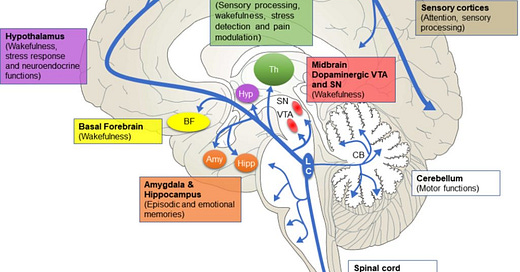Norepinephrine
Colloquially called adrenaline – a powerful activator in the brain
When we speak of adrenaline we think of high stress situations, positive and often negative. Norepinephrine is the neurotransmitter that is related to adrenaline, but not to be confused with the hormone, and it is related to attention, action, but also plasticity and learning.
The Sabre-Toothed Tiger jumps out from behind a bush and turns its large yellow eyes onto our friendly cavemen. The tiger gives a low rumbling growl and takes a cautious small step forward, seemingly ready to pounce at an instant. Our caveman, shocked, stands focusing on the tiger his whole body has been rocketed into a high state of alert and tension. His heartbeat has accelerated, his pupils have dilated, his senses have all pricked up and he has laser sharp vision. At this precise moment he is frozen waiting for the slightest abrupt movement which will spur his body into action. Either to launch is rudimentary spear at the tiger or evade and try to escape.
This is often how the primitive roots of our flight or fight response are portrayed – with a threat scenario. Slightly unrealistically: Neolithic man did not live in the same time period as sabre-toothed tigers, and we are adapted to live in the savannah, more likely, than the jungle. Nevertheless, it is easy to imagine, and we have all experienced these periods of shock or tension from simple activities like being surprised by a person jumping from behind a wall, to having a near car crash, to receiving shocking news. Our system activates and all sorts of bodily functions kick off a string of automated reactions. They sympathetic nerve system preparing the system, in very short periods of time, for heightened vigorous activity.
Keep reading with a 7-day free trial
Subscribe to leading brains Review to keep reading this post and get 7 days of free access to the full post archives.




